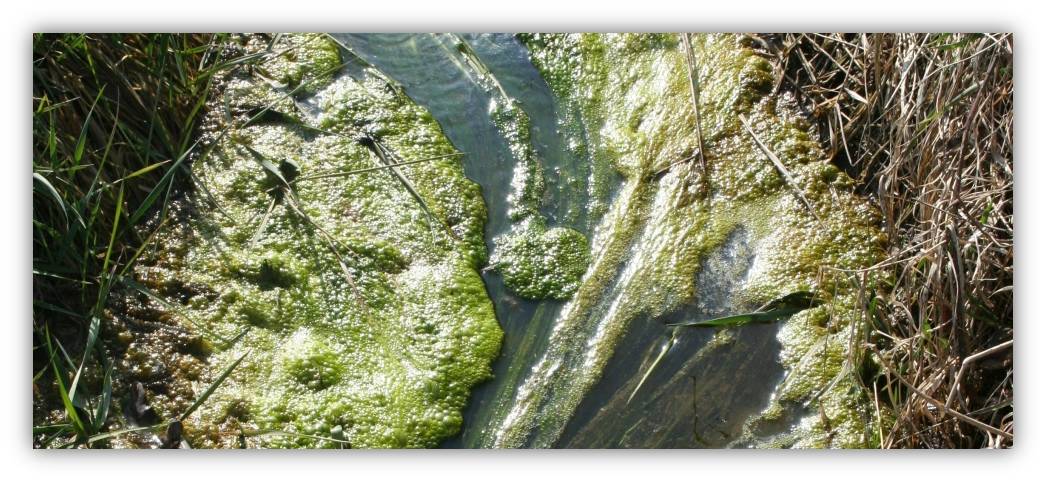
The influence of the rock substrate and soil characteristics on spring water can be quite variable. Therefor, the hydrochemical composition of spring water is variable as well, especially from ground water in loose rocks. Not all springs are naturally poor in nutrients. Springs with a low lime content (silicate springs)usually have a low pH-value and a poor acid buffering capacity. Thus, with a decreasing pH-value, carbon and minerals like manganese, aluminium, cadmium and zinc are increasingly going into solution.
A naturally high content of chloride is to be expected at salt springs. Only specialized organisms are adapted to such conditions. In the interior, such springs are very rare salt water biotops, which usually occur rather close to the coast. Springs discharging water derived from gypsum layers are usually rich in sulfate and iron.
Cold spring water has a low potency to dissolve minerals and is, depending on the bedrock of the aquifer, usually low in nutrients. An exception are seepage springs (helocrene) in marsh or spring forests of the flood plain. Here, organic material rich in nutrients is deposited on the surface of the ground. Human use of areas within the drainage area often leads to an increased leaching of nutrients into the ground water and thus also spring water. Leaching of fertilizer are a severe threat for nutrient-poor springs and their flora and fauna. It is also problematic in respect of the quality standards of drinking water.


